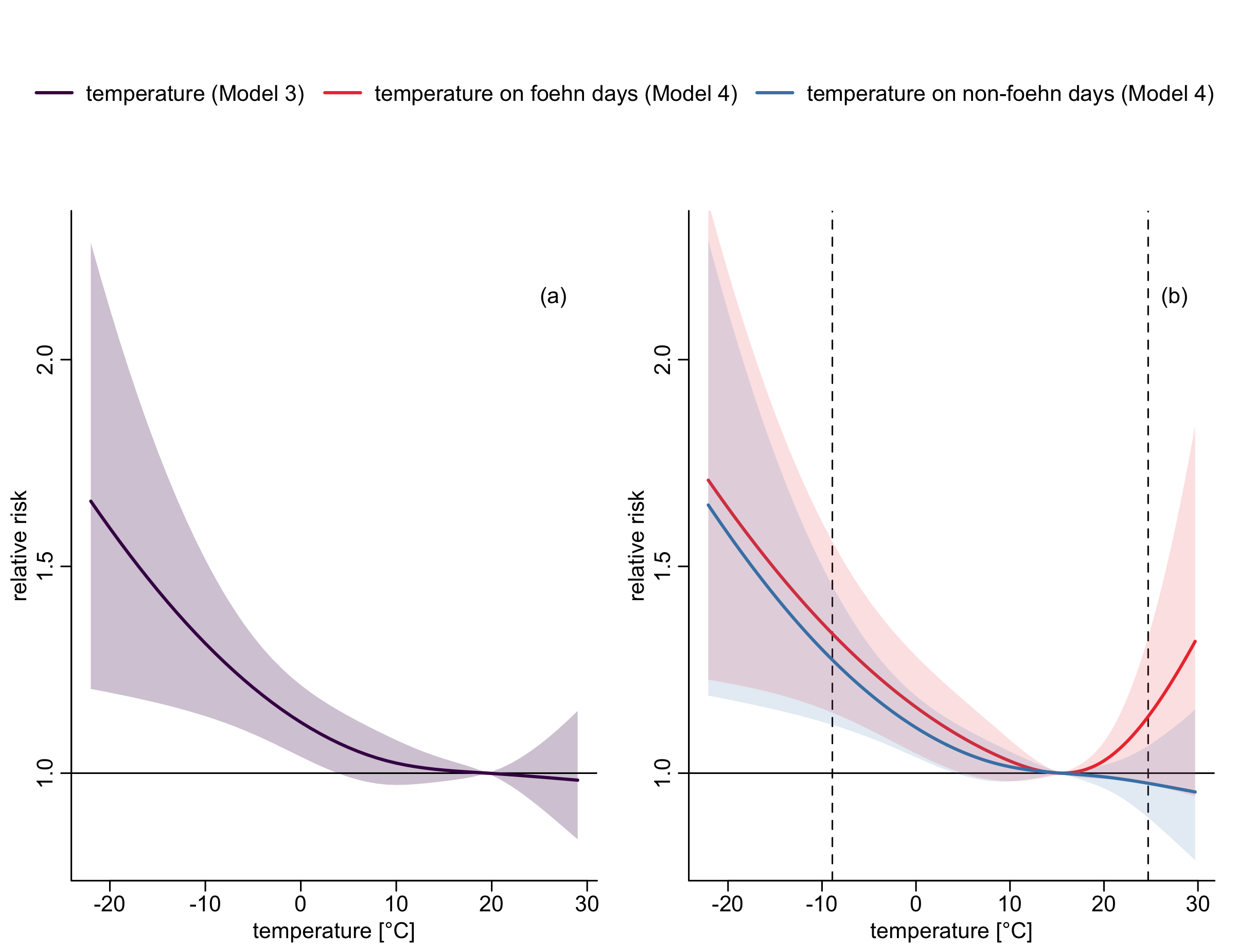Projects
An list of projects that I worked on. Reach out via email if you want to collaborate!
2025: Master Thesis: the risk of hospitalizations associated with foehn winds and heat in the mountainous region of Switzerland. [Code]
Click to read summary and see key figure
Foehn winds are intense warm winds, common in mountain regions, but their health impacts and potential to exacerbate existing heat-related risks remain poorly understood. We investigated the independent and combined association of foehn winds and temperature with cause-specific emergency hospitalizations in Switzerland. We found that foehn winds daily intensity showed small and no consistent association with hospitalizations in temperature-adjusted and non-adjusted models. However, foehn winds amplified heat-related hospitalization risk with a 14% increase in risk at the 99th temperature percentile on foehn days, compared to -2% on non-foehn days (Figure below). The association was larger for females, older adults, and for hospitalizations due to respiratory and mental health causes. While foehn winds did not directly impact hospitalizations, they may contribute to an amplification of heat-related health risks, especially for females and older adults.

2025: Air pollution and emergency rooom visits in Basel, Switzerland [Report] [Code]
Click to read summary and see figure
Over the past decade, research into the health effects of air pollution has grown rapidly, with increasing evidence linking air pollutants to a range of acute and chronic health outcomes. Short-term exposure to PM10 (particulate matter with aerodynamic diameters ≤ 10 μm) has been consistently associated with increases in emergency department visits and hospitalisations, particularly for respiratory and cardiovascular diseases. Applying a time series analysis using distributed lagged non-linear models, we found that PM10 exposure increases the risk for an emergency room visit in Basel, Switzerland (Figure below). This risk decreases when taking temperature as a confounder into account. The presence of heat further exacerbated this risk, with specific vulnerabilities in males and older individuals, as well as cardiovascular cause emergency room visits.

2024: Tropical Cyclone Freddy - an AI-forecasts performance assessment on extreme events [Report] [Code]
Click to read summary and see figure
text about freddy and nice 3x2 plot of character danger and differneces

2024: Are Switzerland`s dogs threatened by future unabated global warming? [Report]
Click to read summary and see figure
text about tuuli and nice 2x2 plot of different scenarios

2023: Bachelor Thesis: Changes in Precipitation Distribution and Intensity and their Consequences on Water Balance in the Fichtelgebirge, Northern Bavaria [Thesis]
Click to read summary and see figure
text about precipitation and nice 3x2 plot of different indices and water balance

